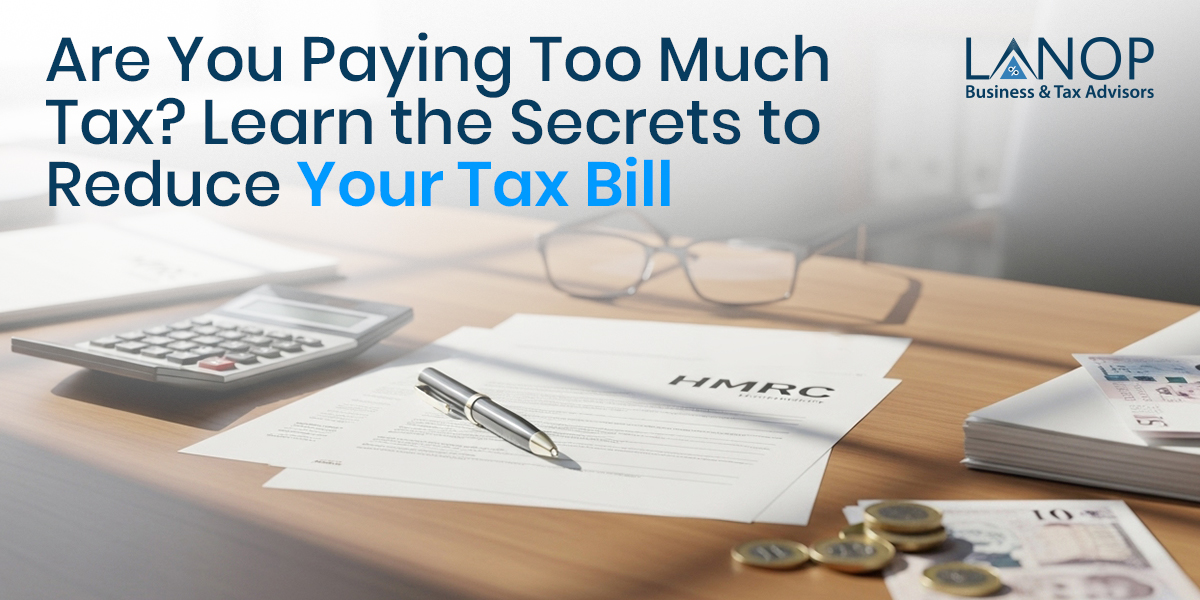Introduction: Decoding the UK Tax System and Stopping Overpayments
In the UK, most workers have their tax taken automatically through the Pay as You Earn (PAYE) system. It’s meant to make life easier, and in many ways it does. But plenty of people later stop and ask themselves: “am I paying too much tax?” More often than you’d think, the answer is yes. Little mistakes, slow updates, or overlooked details can leave you paying too much tax without even realizing it. Here’s the thing: HMRC relies on you to keep your information correct. If you start a new job, claim a benefit, or even move house and forget to update your details, you could be paying too much income tax month after month. The refund usually comes eventually, but why let your money sit with the tax office when it should be in your account?
That’s why it pays to be proactive. In this guide, we’ll break down the three areas where overpayments happen most often: PAYE income tax, Council Tax, and pension withdrawals. More importantly, we’ll walk you through how to check if you are paying too much tax, how to claim it back, and how to stop it from happening again. Rather than waiting for HMRC or your local council to fix errors for you, take control. When you do, you’ll not only protect your earnings but also avoid the constant worry of thinking, “am I paying too much tax?”
Understanding Why You Might Be Paying Too Much Tax
Most cases of overpayment in the UK aren’t caused by fraud or anything suspicious. Instead, they happen because everyday life changes faster than HMRC’s systems can keep up. Recognizing these weak spots is the first step if you want to stop asking yourself, “am I paying too much tax?”
Tax Code Errors: The Hidden Drain on Your Pay Packet
One of the biggest reasons people end up paying too much income tax is due to an incorrect tax code. Your tax code is supposed to adjust whenever your circumstances change. That could be starting a new job, taking on a second role, drawing from a pension, or even claiming the Marriage Allowance. Sometimes it also needs to be updated if you’ve applied for tax relief on work expenses.
The problem is that these updates don’t always happen straight away. When there’s a delay, you may suddenly find yourself paying too much tax HMRC should never have taken in the first place. This happens because your Personal Allowance, the amount you can earn tax-free (currently £12,570 for most people), isn’t applied correctly. In practice, this means you see less in your payslip, and then you’re stuck waiting months before HMRC processes a refund.
Emergency Tax Codes and Missing Information
One of the most frustrating ways people end up paying too much tax is when HMRC assigns an emergency tax code. This usually happens if HMRC hasn’t received the right details about your income, for example, when your new employer doesn’t get a P45 from your previous job. In those cases, the system applies a temporary code, which often results in paying too much income tax until things are corrected.
Emergency codes often come with suffixes like W1 (week 1) or M1 (month 1). These codes calculate your tax only for the current pay period and completely ignore your year-to-date allowance. Another common one is the dreaded 0T code. This code means HMRC assumes you have no Personal Allowance at all, so you’re taxed on 100% of your income. In other words, you’re almost guaranteed to pay too much tax UK employees complain about.
While HMRC usually updates your tax code after receiving the right documents, the process can drag on for weeks. During that time, you’re stuck paying too much PAYE tax unnecessarily. The best way to avoid this is to be proactive: contact HMRC directly or give your employer the missing details straight away. Acting early can save you from weeks of higher deductions and cash flow headaches.
Life Events: The Risks of Multiple Incomes and Pensions
The system works best when you only have one PAYE income. Problems start when you add a second job or begin drawing from a pension. In these cases, HMRC needs to assign your Personal Allowance to a single main income source. If they get this wrong, you could easily find yourself paying too much tax to HMRC and later have to be refunded.
Take pensions, for example. If you begin receiving a taxable State Pension or a company benefit, HMRC should reduce your main tax code so that these benefits are accounted for. If that adjustment doesn’t happen, you could underpay and later face a bill. But if HMRC applies it too quickly or bases it on the wrong estimate, the result is the opposite: you’re suddenly paying too much tax on your pension or your wages.
It’s no surprise then that many workers and retirees end up saying, “we pay too much tax.” These mistakes don’t mean the system is broken; they just highlight why keeping your records up to date and checking your tax codes regularly is so important.
Income Tax: Am I Paying Too Much Income Tax?
Think of your tax code the same way you’d think of your bank balance; it needs checking, especially after any major change in your job or finances. The numbers and letters in your code aren’t random; they decide how much of your income stays tax-free. For example, in the 2025/26 tax year, the standard Personal Allowance is £12,570. That’s why most people see the tax code 1257L on their payslips.
If your number is lower than 1257, it usually means HMRC has reduced your allowance because they expect you to have other taxable income or benefits. The letter “L” means you’re entitled to the standard Personal Allowance. So, if your code looks different, it’s worth asking: “am I paying too much income tax?”
The Secondary Income Trap: BR, D0, and 0T
Overpayments often sneak in when someone has more than one income stream. Maybe you’ve taken on a second job, started drawing a pension, or earned money on the side while still in employment. In these cases, HMRC has to make sure your Personal Allowance is applied for only once. If that doesn’t happen correctly, you could easily end up paying too much PAYE tax.
Here are the codes most likely to cause issues:
- BR (Basic Rate): This code means all of that income is taxed at 20%. It’s often used for second jobs or extra pension income.
- D0 (Higher Rate): With this code, every pound is taxed at 40%. It applies if your total yearly income goes above £50,270.
- 0T: This is the tough one. It means no allowance at all; every pound is taxed. It’s often used when HMRC isn’t sure what code should apply.
There are also regional variations, like CBR for Wales or “S” codes for Scotland, which add even more layers of complexity. If you’ve ever felt like “I’m paying too much tax HMRC should fix,” chances are the problem lies in how your allowance is spread across different income sources.
The simplest fix? Make sure your main job or pension carries the “L” code. That way, your Personal Allowance is used in the right place, and you won’t be left asking yourself, “have I been paying too much tax?”








